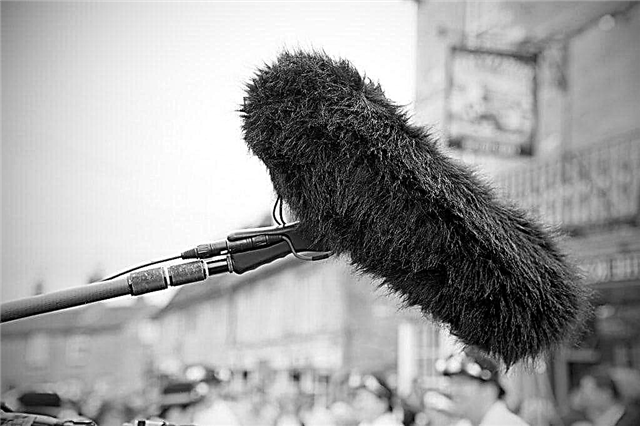
The dagger is recognizable at first sight, it is an invariable attribute of the parade uniform of sailor officers. Short blades also appear in the engineering troops and infantry.
However, why do sailors need it, why does a dagger become an object of pride? Since when has he been in the fleet? Does it have any practical functions, or remains an exclusively decorative element? Having examined the historical aspects, you can find the answers to these and many other questions.
Why would a sailor dirk?

In certain areas of activity, weapons should always be with you. In the past, this statement was true for the fleet - ships were boarded. Sea battles took place, piracy flourished. Until the mid-19th century, sailors used boarding sabers, broadswords. But a large-sized blade weapon is inconvenient in the conditions of holds, even on the deck it is not always appropriate - it was necessary to invent something more specialized, convenient for sailors. A dagger appeared - initially it was often made even from a fragment of a saber, which retained part of its blade and guard.

The dagger proved to be the best in practice - handling it did not require special skills, it allowed you to fight where the saber became only an obstacle. The first daggers had impressive sizes, about 60-80 cm, then the blades began to decrease in size. And after the ships stopped boarding, cold steel simply became part of the uniform.The last major boarding battle took place as part of the Northern War, at least researchers say so. Since then, the dagger has lost its practical significance.
Who and when officially introduced the dagger in Russia?

Like many other naval traditions, the wearing of a dirk was introduced by Peter the Great. Starting from the time of Peter the Great, a short blade migrated to some other branches of the army, replacing the saber where it was uncomfortable. In 1803, the wearing of this species was streamlined, the right to own it was assigned to the midshipmen and officers. In the 19th century, a length of 30 cm, a square section, and a handle 9 cm long were fixed to the dagger. The scabbard was supposed to be wooden, in black leather trim, with clips and rings necessary for fixing on the sword belt.
After several decades, the dagger became a two-blade and diamond-shaped in cross section, then came blades that can be attributed to the needle type. The weapon was greatly modified, its length also repeatedly passed from one indicator to another. By 1913, the length of the blade was 24 cm.
To whom and when do they give daggers?

Daggers give officers graduates of naval educational institutions. The right to wear are officers, as well as warrant officers, admirals, generals. In the past, upon retirement or dismissal, the officer could no longer have a dagger, documents for the right to own this thing were not executed, and had to leave it. However, today, upon dismissal with the right to wear a uniform, the right to own a dagger remains.
Also, this weapon is considered as a premium, it can be given as a gift for special merits - it can be marked with a commemorative signature, the name of the owner. The award dagger is received after official thanks for the merits, with the execution of the relevant documents.
Interesting fact: the officer was supposed to wear a dagger on the ship - only on guard duty, on the shore - constantly. The only exception was ceremonial cases when it was necessary to appear with a saber.
Daggers in modern history
In 1917, the wearing of the dirk was canceled, and in 1924 it was returned. However, two years later edged weapons were canceled again to return only in 1940. After the war, the dagger was left to the sailors, but with a blade length of 215 mm, a diamond-shaped cross-section, in chrome-plated steel.
Today, the dirk remains an element of the ceremonial form, it is worn by officers, generals, admirals and midshipmen. There are similar blades in other branches of the army, but naval blades differ in their emblems and design details. In the past, it was not only sailors who wore it: in the 19th century, even telegraph workers and postmen could boast of their own daggers.
Weapons of other countries - borrowing a dagger

As for borrowing in the Navy, the transfer of foreign experience to Russia was most often observed here, as was customary since Peter the Great. However daggers were copied by a number of states from Russian sailors.
So, they appeared in Germany since 1902, after the Kaiser Wilhelm II saw them among the crew of the cruiser Varyag.In the 1880s, even before the Kaiser, the Japanese did the same, despite the fact that at that time they were opponents of Russia. The dagger was adopted a little in excellent form - the Japanese found it appropriate to stylize weapons under a short samurai sword. He appeared in their fleet in this form.
Thus, the dagger appeared in the Navy completely by accident. Since the time when ships were boarded, it was necessary to have on hand cold steel, the use of which would not create problems in a confined space, and this blade turned out to be the optimal solution to the problem. Today, the thing remains part of the parade of naval uniforms, the pride and main decoration of a naval officer, admiral or general, and even midshipman.












